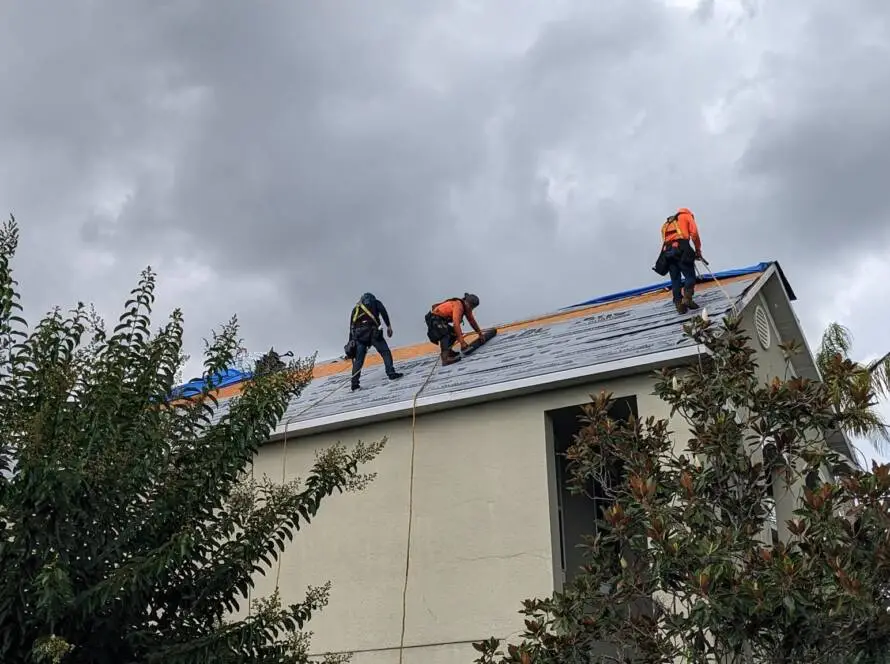What Is Hail Damage?
To understand hail damage, you first have to understand hail. What is hail, exactly? Hailstones are clumps of water droplets that freeze together in the upper regions of thunderstorm clouds. Because they freeze high above our heads, it doesn’t have to be cold down close to the ground in order for them to fall. That’s why you might see hailstones in the summer, not just the winter.
The reason why hail causes so much damage is because of its size. Hailstones can range in size from tiny little pellets to the diameter of a baseball.
Now, remember that these chunks of ice fall from a great height, so they’re picking up speed as they come down. Add wind into the mix, and the stone travels at an even greater speed; in fact, it can even travel as fast as 72 or 100 mph if it’s as big as the kind we’re talking about.
Next, imagine a hailstone the size of a baseball smashing against your roof at the speed of 72 or 100 mph. That’s like a tiny high-speed car crashing into your house. Even if it’s traveling at a slower speed, say, 40 mph, that will still create a significant impact (and serious damage)
After a hailstorm, you might find torn or missing shingles and dents. Or you might even find holes punched through your roof if it’s old and has thin spots. All of this destruction will cost you a lot of money in the long run, and it can cause even more problems if you don’t spot it right away.
How Can You Spot Hail Damage?
To spot hail damage, there are a couple of places you can look. The first place is, obviously, the roof. Search for torn or missing shingles and indentations. Be careful, though, and try not to place your feet in a spot that is damaged. If the spot is thin enough, your foot could provide just enough weight to push right through that spot and create a hole in your roof.
The second place you can check for hail damage is your attic. Look for water damage that might have been caused by a roof leak, and keep an eye out for holes through which you can see open sky. These are indicators that hailstones may have torn through your roof.
What Should You Do If You Suspect Hail Damage?
If you suspect that your roof has been damaged by a recent hailstorm, your next step should be to have a roof inspection performed. At TruGrit Roofing and Construction, we are certified to provide professional, thorough roof inspections that catch most if not all hail damage that may have impacted your home. After we perform our inspection, we will make repair recommendations based on our findings.
If you have any questions about hail damage or need to schedule a free roof inspection, call +1 (407) 772-6942.




